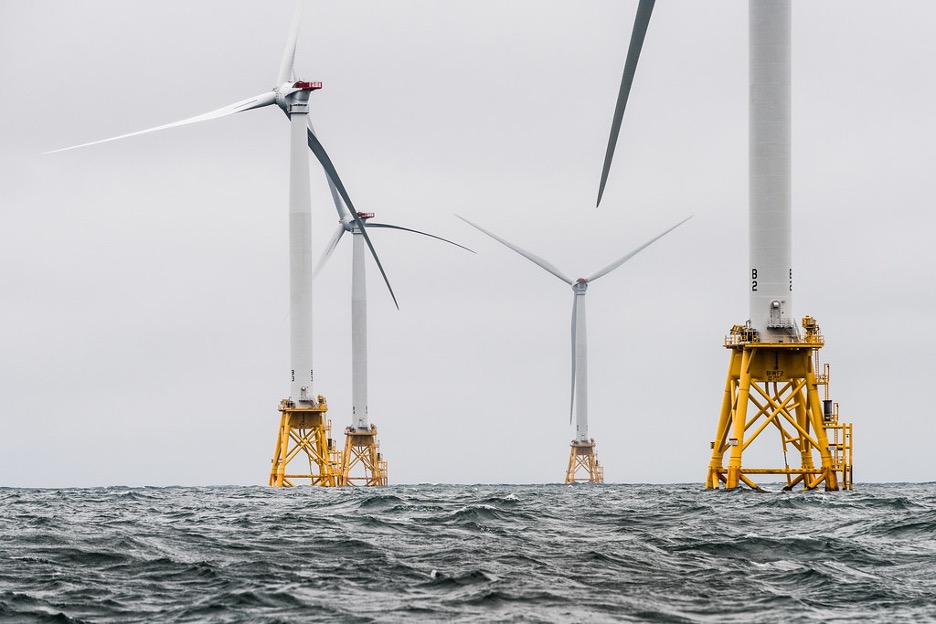
Currently populating headlines are multiple stories linking recent whale deaths to offshore wind development. Numerous conflicting narratives surrounding those beachings relating them to wind are circulated in the media. The Surfrider Foundation has released an official statement regarding offshore wind. Please click here to read the full statement.
The Jersey Shore Chapter welcomed representatives from the New Jersey League of Conservation Voters (NJLCV) at a public meeting on February 4, 2023. Sunni Vargas, Campaign Organizer, shared multiple resources and a presentation outlining the details, dates and designs regarding offshore wind. Please view and share the resources found below.
Listen to the sound of turbines
The New Jersey Board of Public Utilities Energy Master Plan
Sign up to learn more about offshore wind with NJLCV
FACTS
Offshore Wind Industry and Recent Whale Beachings on the East Coast
1. Since 2016 NOAA has been studying an “unusual mortality event” (UME) for
humpback whales on the East Coast, which means that more than the usual
amount of whales have been found dead, starting in 2016 and continuing today.
Since 2016, 178 whales have been discovered. (1) UMEs also occurred in the
2000s. NOAA performed necropsies on some of the current UME whales and the
top two causes are ship strikes and fishing gear entanglements. NOAA scientists
see no connection between offshore wind and whale deaths. (2)
2. Since early December 2022, 14 whales, mostly humpback but at least two
toothed whales have washed up on the East Coast (half of those in NY/NJ).
Marine mammal stranding groups are currently performing necropsies on some
of the whales (others were too decomposed to analyze).
3. Baleen whales (humpbacks for example) do not use sonar like toothed whales
(sperm whales for example), and are therefore less sensitive to noise. For this
reason, they have not historically been connected with beachings from loud
offshore noises like oil and gas exploration or Navy testing. (3)
4. It is still unclear exactly what/when activities the offshore wind industry has been
completing off the East Coast since 2016, but they have not yet begun turbine
construction, the loudest part of wind farm deployment. Additionally, the type of
sound imaging they might be doing offshore is very different from the type the oil
and gas industry and the Navy uses. This lower energy type of sonar is used all
the time by research vessels in the ocean and is not linked with whale beachings.
5. Offshore wind energy work boats are required to have constant marine mammal
spotters on board, and are limited to a 10-knot speed limit. (4) It is possible that a
offshore wind boat struck one of these whales, but there are hundreds of large
boats used for shipping offshore, so the chance that these deaths are because of
wind boats specifically, are low. (5)
6. Clean Ocean Action, along with a few newer groups that have formed in the last
few years to oppose offshore wind development, have been blaming the whale
deaths in the offshore wind industry, starting in early December, culminating in a
press conference on Jan 9 that received a lot of media attention. A couple of the
anti-wind groups on the East Coast have ties to the fossil fuel industry. (6)
7. A group of New Jersey environmental groups, including the Surfrider Foundation,
NJLCV, ANJEC, Sierra Club, and GreenFaith, pushed back on COA’s narrative with
a press event on January 18, 2023. Surfrider was not able to attend in person.
8. On January 19, 2023, the National Oceanic and Atmospheric Administration held
a press conference stating that, not only is there no evidence connecting the
offshore wind industry to recent whale deaths, “There is no information that
would support any of the equipment being used [by the wind industry] could
directly lead to the death of a whale”. (7)
9. Surfrider is currently officially supporting three offshore wind projects: The South
Fork project, northeast of Montauk, NY, supported by the Eastern Long Island
Chapter; (2) the Ocean Wind 1 project, offshore of southern New Jersey,
supported by the Jersey Shore and South Jersey Chapters; and (3) the Empire
Wind project, in the NY Bight, supported by the NYC Chapter.
*1 NOAA Fisheries. 2016–2023 Humpback Whale Unusual Mortality Event Along the Atlantic Coast. Available at:
www.fisheries.noaa.gov/national/marine-life-distress/2016-2023-humpback-whale-unusual-mortality-event -along-atlantic-coast
2 NOAA Fisheries. Frequent Questions—Offshore Wind and Whales. Available at: www.fisheries.noaa.gov/new-england-mid-atlantic/marine-life-distress/frequent-questions-offshore-wind-a nd-whales?fbclid=IwAR2TXmI7xEfF89Cws7dmZJWYxkgnqTfl-nd6Fj3ql0D15bGharPlYOa_Z5c 3 NOAA Office of Protected Resources. 2018 Revision to Technical Guidance for Assessing the Effects of Anthropogenic Sound on Marine Mammal Hearing (Version 2.0). Available at:
media.fisheries.noaa.gov/dam-migration/tech_memo_acoustic_guidance_(20)_(pdf)_508.pdf 4 Long Island Press. Feds: Offshore Wind Not to Blame for East Coast Whale Deaths Available at: www.longislandpress.com/2023/01/19/feds-offshore-wind-whale-deaths/ 5 USDOT. Maritime Trade and Transportation by the Numbers. Available at: www.bts.gov/archive/publications/by_the_numbers/maritime_trade_and_transportation/index
